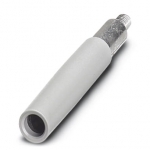Make a multistory building insulation is not easy, need special equipment. But inside the wall insulation with mineral wool or gypsum board gives a good effect. With proper installation, the heat losses are reduced by 20-30%. The main thing that a layer of thermal insulation in the room matched technology. How to carry out wall insulation inside the living room with plasterboard, we describe in this article.
Types of Drywall and its application

Related Articles - how to cut the mineral wool.
Plasterboard may be used for thermal insulation of the walls inside buildings. Use either waterproof or wall.
Moisture resistant can be applied in cottages or for rooms with a high degree of humidity: bathrooms and kitchens.
Important! Moisture-resistant gypsum board, the best solution for areas where heating is not provided.
This material will not get any cyclical temperature jumps. It is only necessary after the installation of sheets to put on the front of the waterproof protective primer or paint. You should also make plasterboard antiseptic processing, allowing to kill harmful germs and bacteria.
Wall types are suitable for living rooms, where the humidity is less than 70%. The sheets are marked in blue on a gray surface.
As for the size of the sheets, it is best to buy the product 2.5-3 meters in length and 1.2 in width. Thickness are perfect 12.5 mm Blade (9,5 mm - this type of ceiling).
Plasterboard is:
- normal;
- moisture-proof;
- water- and windproof;
- enhanced strength;
- fire resistance.

Related article: Separate wall insulation from the inside balcony.
There are 3 ways of warming:
- Adhesive method. Sheets are attached directly to the wall with gypsum or cement-polymer glue. With this finish area of the room does not become smaller. The only disadvantage of this method is that it is impossible to make a lining of thermal insulation, the walls have to be strong.
- Frame method with thermal insulator.
- Carcass method without insulation.
The last two ways are most commonly used drywall. To not only warm a room, but also to achieve good sound insulation performance, you need to use the profile. The only downside is that the room is substantially reduced in size.
types of insulation
Warming of the surface under the plasterboard is best done using a mineral wool or plastic foam. You can also use izolon or penoplex. These insulators are different mounting methods, cost, durability.
According to research, par foam polystyrene is harmful to health. In a residential area it is rarely used. Another minus - some types of foam eat rodents. But it has a low cost, and is also available in many densities and sizes.

Related article - which is better, foam or mineral wool?
With regard to mineral wool, it can be attributed to the benefits of light weight (especially useful for insulation of old buildings), as well as low thermal conductivity. Significant negative mineral wool is only one - hygroscopic. Therefore, when the thermal insulation partitions and walls is necessary to prevent the accumulation of condensate. To do this, use the steam isolation.
There are several types of mineral wool. They all differ in the mode of production, composition and technical indicators. Among the types of wool, which are presented on the market, the most popular is the basalt wool on the basis of fiberglass. Like other types of insulation they have both advantages and disadvantages.
The main negative aspects of glass:
- Thermal conductivity is greater than that of stone, respectively, the heat disappears faster.
- At increased temperature the solid forms molten glass.
- Uncomfortable at work (glass fibers can cause itching, require the use of protecting glasses, gloves, respirator, dressing tight suit).
Important! To be most effective it is necessary to lay mineral wool into 2-3 layers.

Despite the resemblance, basalt and glass wool are significantly different. Glass wool is made of very thin glass fibers and basalt - volcanic rock of the mountain. They also vary a lot of heat conduction indicator that at least basalt, and, consequently, it retains heat better.
The cost of materials for thermal insulation:
- The cheapest way is to insulate the walls of the foam at home, the price of which varies in the range of 70-90 p. 1Q. m.
- With regard to mineral wool, it is more expensive - 90-150 rubles. The price of the material depends on its density, thickness and manufacturer.
- Penoplex being extruded foam, but with increased strength and density stands for 1 square. meter of about 200 rubles.
Also the insulator may be izolon (foamed polyethylene). It costs 280-300 rubles per 1 square meters.
Steps for thermal insulation of walls
To work process passed quickly and properly, should prepare the necessary tools. This at times will accelerate work to protect insulation of walls.
We need the following materials:
- plasterboard;
- adhesive tape;
- insulation;
- membrane to reach the maximum degree of vapor barrier;
- screws, nails;
- hammer, screwdriver, saw, handsaw;
- yardstick;
- metalloprofili or wooden slats for the construction of the chassis;
- fixing materials.
On sheet 1 requires approximately 30 pieces of screws. It is best to buy a 20 mm long screws.
With regard to the manufacture of the frame, the profile you need to take 2 forms: labeled CD and UD. The length is selected based on the size of the room.
frame design
It lies in the perimeter Scribe and thinking through how the framework will be located on the wall. Only a simple pencil and spirit level.
Tip! For best effect, the insulator structure should be placed away from the wall at 3-10 cm.
Training:
- cleaning the surface;
- Align all irregularities and chipped putty and deepening;
- drying heater or stroyfenom;
- getting rid of mold and mildew.
Sometimes it is necessary to process the walls of a special water isolating putty to prevent damp. First layer applied vertically, then - horizontally.
The construction of the frame

On a pre-made labels need to mount the frame. To avoid contact with the metal wall on the sole Profile glue tape prepared in advance. Mounting frame members to the wall is carried out with the use of screws and dowels.
Before laying the insulator surface is prepared in advance. Produce removal or recovery of fragile portions plaster. To exclude the possibility of the formation of mold and mildew, you need to do the treatment primer with antiseptic.
plasterboard sheets are mounted on a frame made of metal profile or tree. metal frame will be considerably longer than from a bar.
In the battery location, where the installation of thermal insulation is difficult, can be used penofol.

Collect frame begins with the installation guide, created from the UD profile. Reiki attached to the ceiling and the floor space from a wall of 50-60 mm. Rack segment profile is inserted into the guide. The ends are fixed with small screws ( "flea"). From the sides podgibayutsya edge hangers and connect with the racks. Step between the profiles must be observed so that the 1-sheet had 3-4 slats.
Important! When the frame is constructed, beginning to lay the insulator.
To improve the rigidity necessary to make of the CD profile cross the bridge. Profile cut so that its length is cut off halfway adjacent slats. Scissors cut the metal shelves. Then the workpiece is fixed "flea beetles" on the frame.
The device is a vapor barrier
Often used as a vapor barrier penofol. Before you mount it, you need to make sure that the inside of the room facing side of the foil material.
As regards vapor barrier material which has a textured surface, the rough side thereof must also be directed into the room.
Warming

Insulation should be cut into pieces, the size of which should coincide with the parameters of the frame cells.
If the insulation material you are using the foam, then it should be fixed on spetskley, was produced with the addition of water. Each piece should dock tightly with the surface. If there were gaps between the parts, they are filled with foam. After drying the foam adhesive, effect a locking dowel-umbrellas. Place the dowels need at the corners of the sheet and one in the middle.
Important! If the space between the metal frame and the wall is almost no (3 mm), it is advantageous to use mineral wool. For this we first need to make it rassloyku.
After laying the inner insulation sheathing frame begin sheets of plasterboard.
When the screw is screwed, his head should be slightly countersunk, 1-1.5 mm, but without tearing the cardboard. To simplify the fixation is better to buy with stop bits.
Once the walls are completely covered with gypsum boards, surface trim any familiar way. Well insulated wall can be pokleit wallpaper or apply the paint.
Wall insulation balcony

As for insulation of balconies and loggias, similar facilities require compliance with certain rules.
The material for the insulation should be:
- waterproof (since there is a high probability of occurrence of water on the balcony);
- drywall need to buy only water resistant;
- walls must be treated with antiseptic.
For insulated balcony, frequently used method for frameless. This is due to the fact that this space and has a small area. Isolator creates a higher degree of reliability of a design, in spite of the different effects: the tension, moisture and other loads.
Initially, the wall is prepared by mounting sheets. All fragile area is reduced, and the surface is treated with antiseptic substance.
Once the walls are ready, proceed to the installation of sheets. Initially, they need to be cut into appropriate pieces. Cut sheets at once is not recommended, it is better to do it in the process.
Once the material is to be prepared, you can start to fix it. This should be done with the help of adhesive. This is the easiest way to mount hectoliters. In carrying out such work, care must be taken so that the layer of the mixture was the same everywhere.
Thermal insulation allows to protect the house from moisture, drafts and ensure a favorable and comfortable environment. After insulation, as a shield, can isolate themselves from the harmful effects of the environment.



